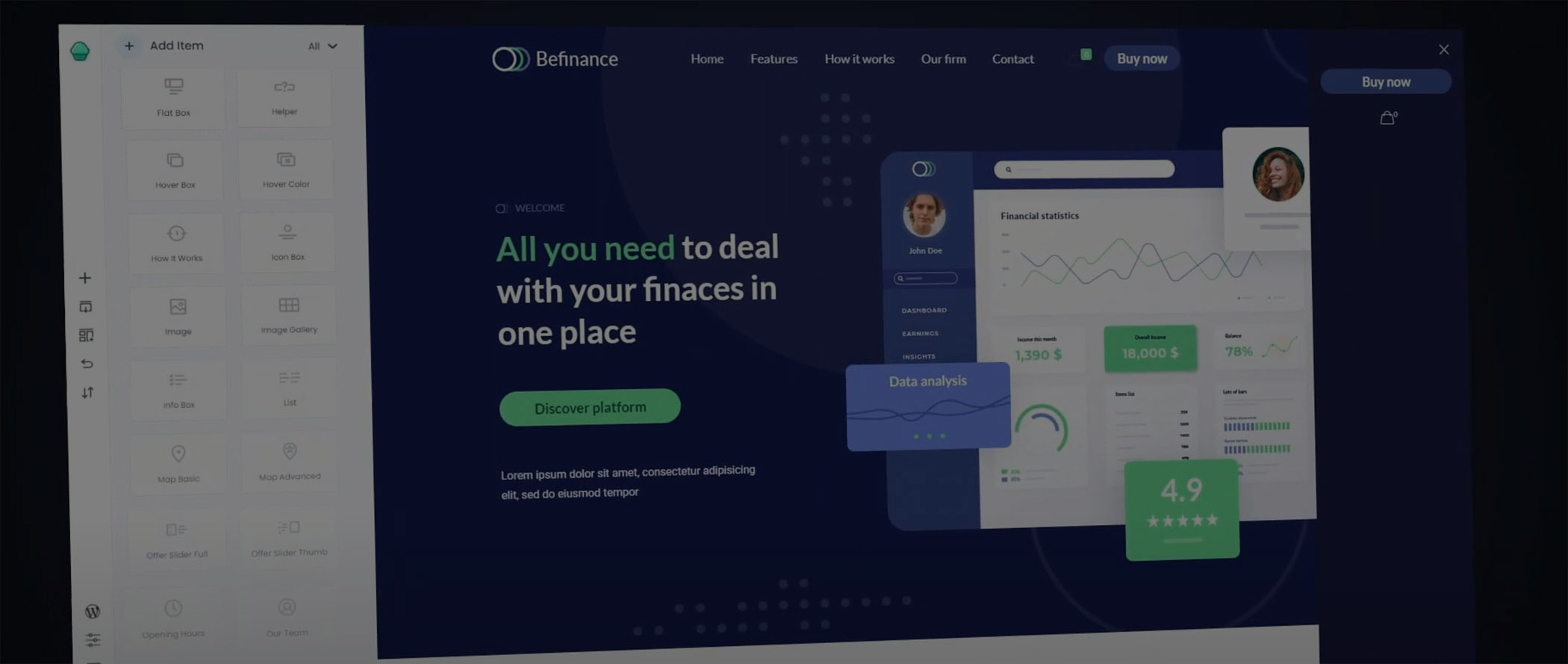
Elementor vs wpBakery vs BeBuilder: The one you should use
June 25, 2024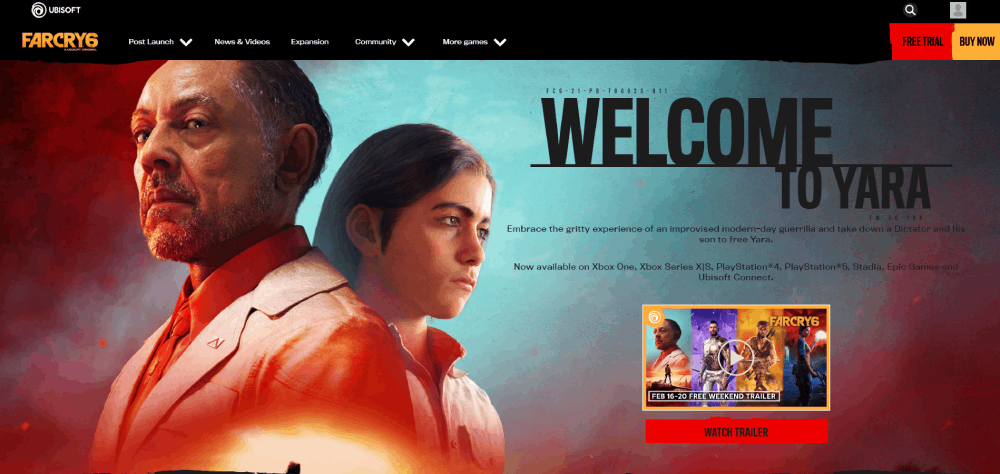
Gaming Website Design Examples to Inspire You
June 26, 2024Crafting the perfect website can feel like navigating a maze. Elementor, Beaver Builder, and BeBuilder have emerged as powerful contenders in the realm of WordPress page builders, but which one reigns supreme?
In a digital age where visual appeal and efficiency are key, understanding this trinity of drag-and-drop editor plugins becomes essential. Each offers distinct features—Elementor with its array of widgets and Beaver Builder known for its user-friendly interface; while newcomer BeBuilder aims to push intuitive design.
So why engage with this article? Simple. Your website’s performance, aesthetic, and functionality hinge on the tools you choose. By the end of this deep dive, you'll decipher which page builder suits your needs, from advanced custom fields to responsive design.
We'll explore plugin performance, customer support, and pricing plans, setting the groundwork for you to make an informed decision. Prepare to unleash your site's potential with the best WordPress page builder plugin tailored for you.
Elementor vs. Beaver Builder vs. BeBuilder: An Overview
| Feature | Elementor | Beaver Builder | BeBuilder |
|---|---|---|---|
| Primary Function | Drag-and-drop page builder | User-friendly front-end editor | Intuitive and highly customizable |
| Template Library | Extensive and varied | Good selection | Rich and unique options |
| Responsive Design | Excellent | Excellent | Superior, highly fine-tuned |
| User Interface | Intuitive but complex | Simpler and direct | Most intuitive and user-friendly |
| Free Version | Yes | Yes | Yes |
| Pricing Plans | Competitive | Value for money | Best value with premium features |
| Customer Support | Robust | Direct and efficient | Exceptional with 24/7 live chat |
| Third-Party Integration | Excellent | Good | Seamless and extensive |
| Custom Widgets/Modules | Rich selection | Adequate | Most diverse and innovative |
| Performance Optimization | High | High | Top-tier, optimized for speed |
| Learning Curve | Moderate | Low | Easiest to master |
The BeBuilder
Muffin Builder is a native page builder for the widely popular BeTheme. This page builder is ideal for persons who pay attention to detail.
It lets you split your pages into different working sections and add colors, layouts, and building blocks to each one.
With BeTheme, a premium page builder comes with your license, along with everything you need, such as:
- Top-of-the-line 24/7 support
- Contact Form 7, Slider Revolution, WooCommerce, and other premium plugins
- The Muffin Builder and Live Builder premium page builders
- 60+ customizable elements
- 100+ pre-built section templates you can mix and match
- 600+ pre-built, customizable websites
The Elementor Theme Builder Plugin
This visual drag-and-drop page builder features advanced design options, like:
- Custom positions
- Padding
- Margins
- Global settings for colors and typographies
Elementor is ideal for professional WordPress designers. Most users love this page builder for its advanced features and design options.
People also love that Elementor’s development team adds new features regularly, giving you access to new goodies for your site.
The Beaver Builder Theme Builder
Beaver Builder is more developer-friendly, and some people prefer lightweight stability over tons of features. That is one reason Beaver Builder has been successful.
However, the Beaver Builder page builder has much to offer regarding features. This frontend drag-and-drop page builder offers clean code, a stable platform, and well-documented PHP, JS, and CSS options.
Beaver Builder is a flexible page builder that works with almost any theme. You can separate your backend tools from your frontend design, improving your workflow and giving you more control over your content.
The Beaver Builder page builder plugin is ideal for novices and veterans because it supports custom posts and multisite installations. And it is available in paid and free versions.
Elementor vs. Beaver Builder vs. BeBuilder: Special Features
The Elementor Page Builder Plugin
The Elementor page builder offers unique features, like:
Full Theme Building
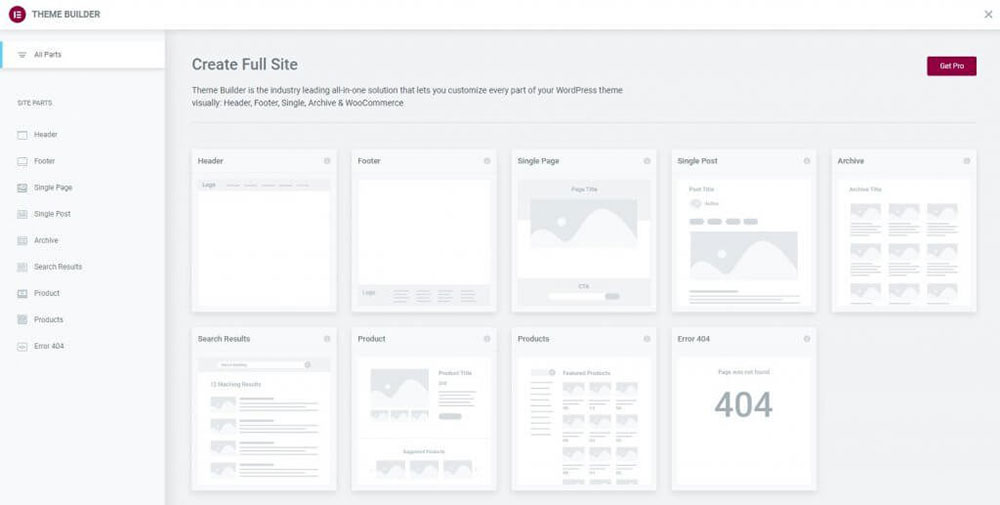
You can build your entire theme with Elementor. For example, you can use the same Elementor interface to create template parts such as:
- Archives
- Headers
- Footers
- Singles
Embed Anywhere
You can embed Elementor templates with shortcodes or widgets. For example, you can use Elementor to design a CTA (Call to Action) in your sidebar.
Element-Level CSS
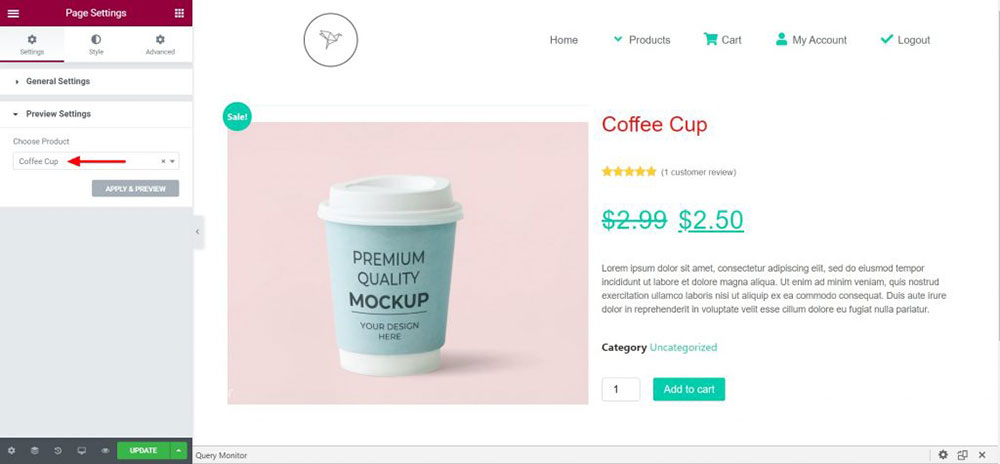
You can add custom CSS directly to specific widgets or to the entire page (whatever you prefer).
Elementor Canvas
This addition lets you build an entire web page from scratch separately from the WordPress theme.
Custom Positioning
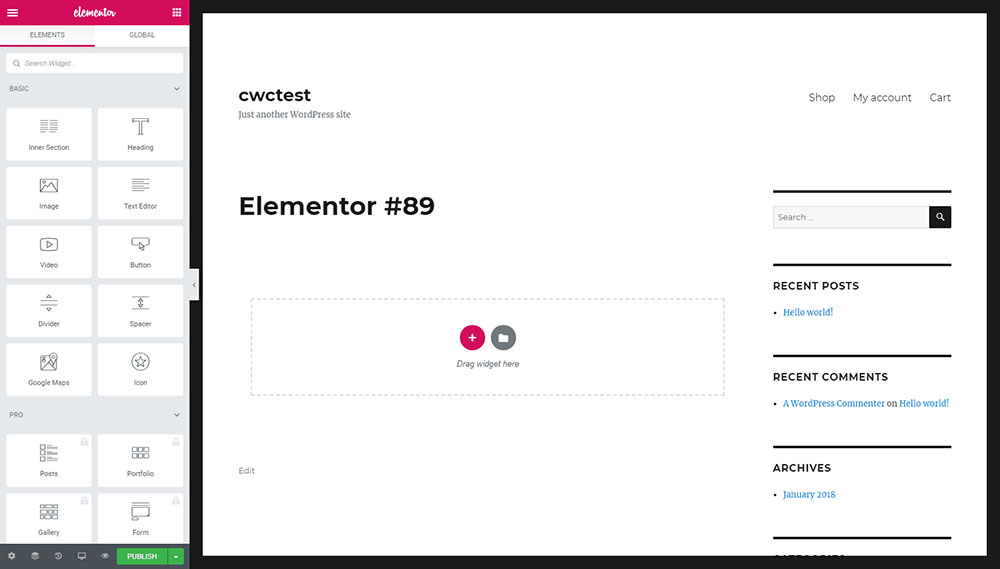
Use absolute or relative positioning for pixel-perfect positioning control for your designs.
Global Widgets
Use global widgets in multiple positions throughout your website, and then update every instance simultaneously.
Motion Effects

Create interactive, more immersive designs by adding scroll effects.
The BeBuilder
This live builder’s autosave and backup function come in handy for maintaining version control.
Some of the actions you can access from the admin toolbar are four different save tools.
These combine with the standard Publish and Update tools to establish and maintain version control. These save features include:
Autosave
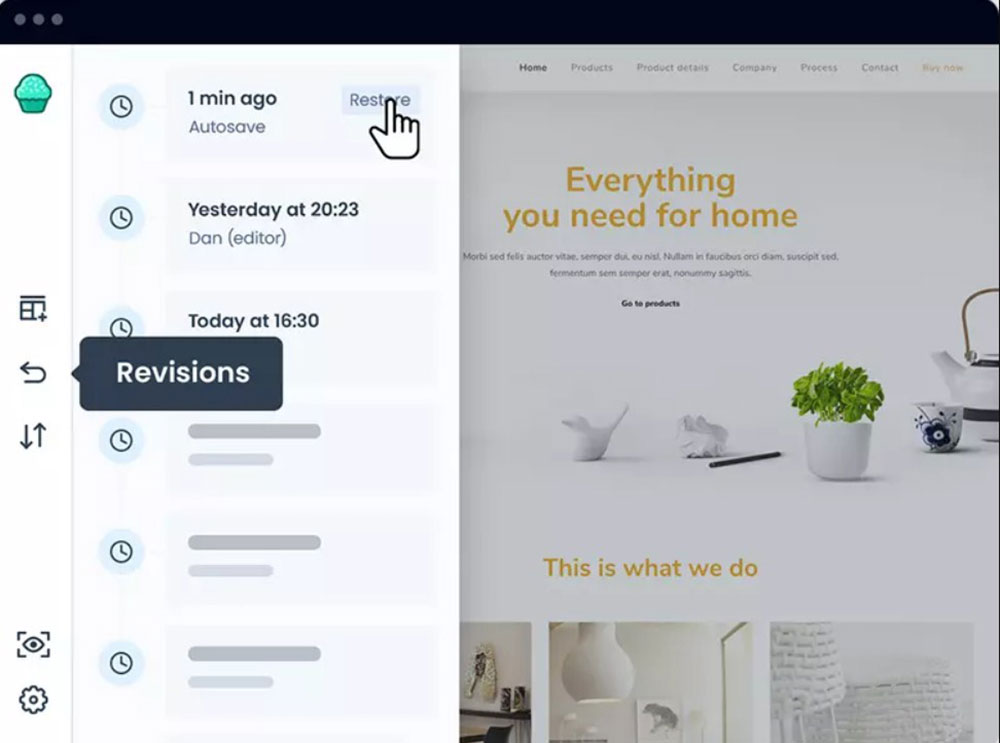
It makes a copy of the page you’re working on every five minutes.
Updates
It stores copies of a page whenever you hit the “Update” button.
Revision
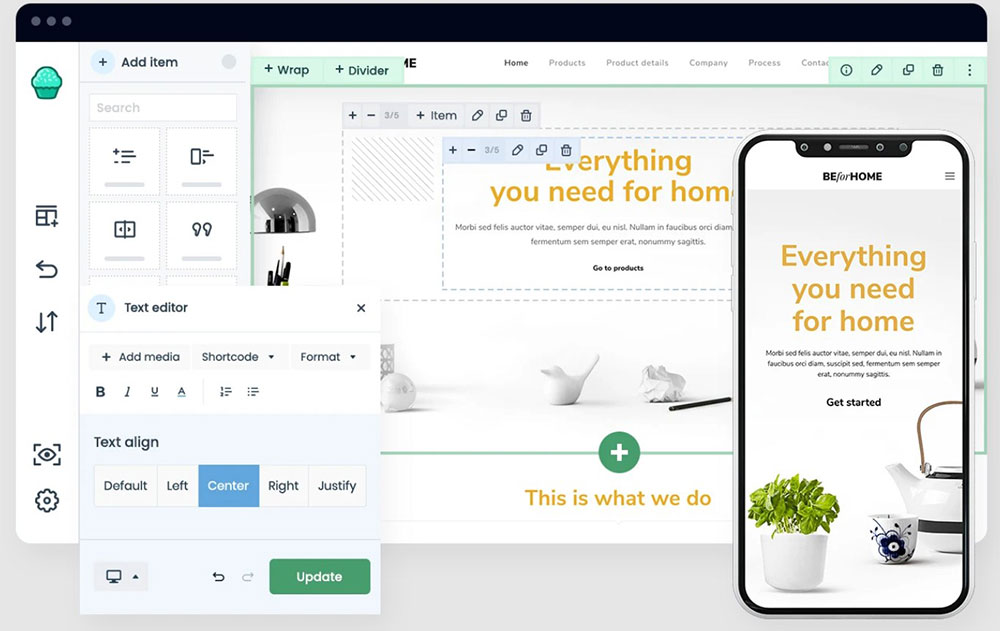
You can save particular versions of the page.
Backup
It stores backup copies of a page before restoring an older version.
These features can help to shorten your website building workflows by making it easy to:

- Create a historical record of the building of a page
- Automatically manage backups
- Return to a preferred version with a single click
Beaver Builder Theme Builder
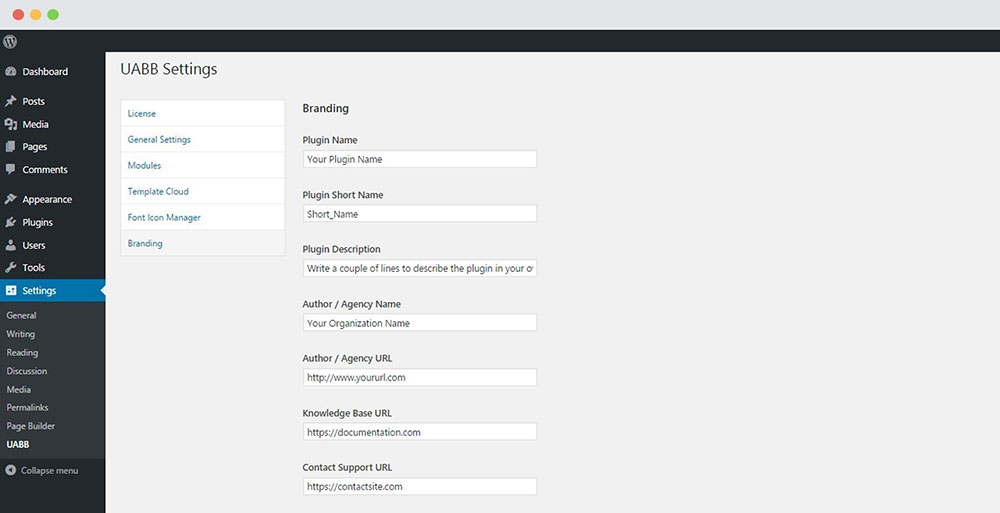
The fast and lightweight Beaver Builder runs on Bootstrap. Even with its myriad of modules and more, there’s zero bloat.
Beaver Builder has clean and straightforward code that executes instantly. If there’s any lag, the problem may be your PC or internet connection, not this theme builder.
White-labeling is offered only by Beaver Builder. If you’re building a site for a client, this builder creates a custom, white-labeled end product.
Beaver Builder also supports RTL (right-to-left). That makes it ideal for languages read from right to left and arranged in an RTL format.
The Top WordPress Page Builders’ Interfaces
The Beaver Builder Interface
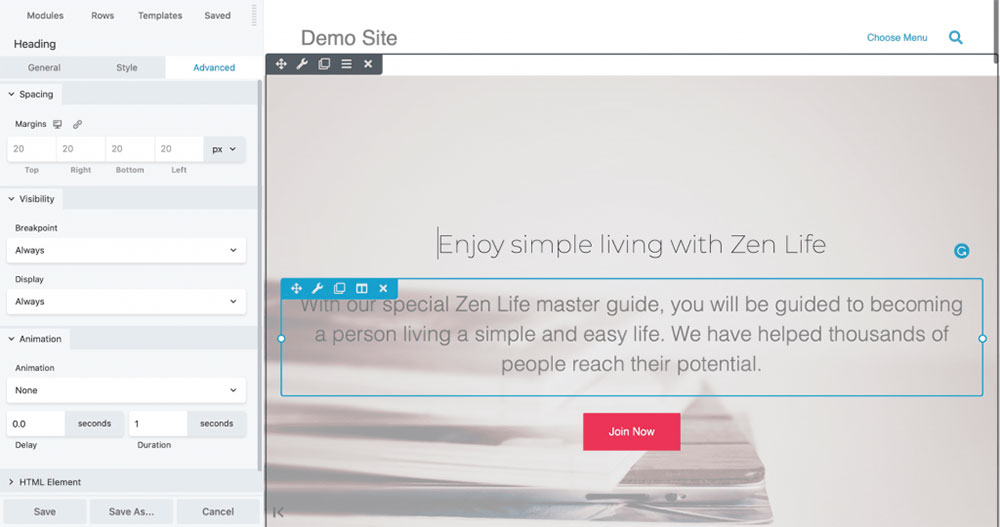
Beaver Builder’s interface is more minimalistic than Elementor’s interface. It has a full-width frontend display so you can see how each page will appear on the website.
Beaver Builder’s interface is one of its strongest points. It is fast and glitch-free, which makes for a smooth working experience. It’s also highly customizable.
It has multiple interface layouts that let you customize it to match your workflows. You’ll see a full-screen preview of your design with a toolbar at the top upon launching the Beaver Builder interface.
Customizing an element with this page builder is as easy as clicking on it and adjusting the settings in the pop-up box.
The Elementor Theme Builder Interface
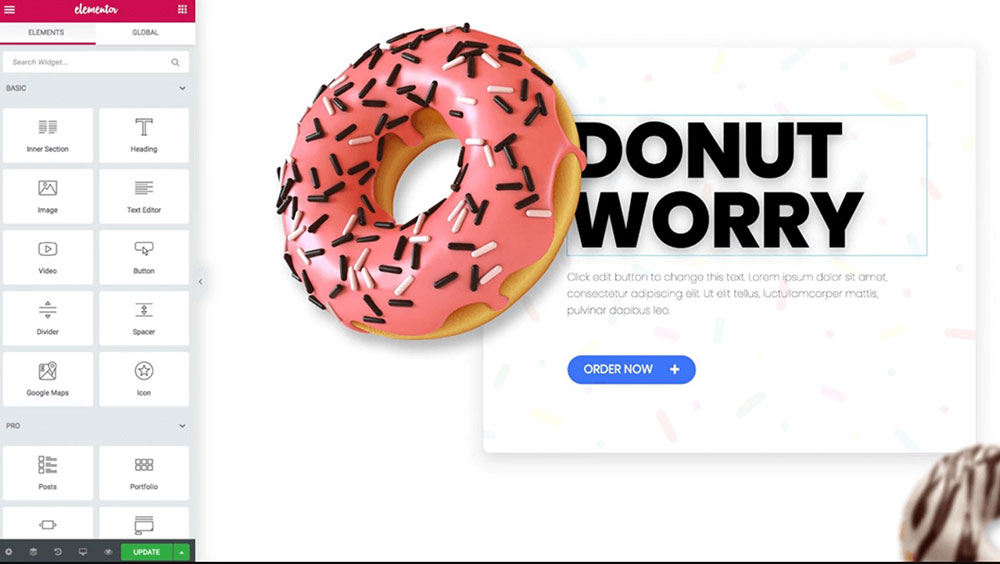
All of the elements in Elementor’s editor are on the sidebar to the left of the screen. To use an element, drag the one you want and drop it into the preview panel.
Edit an element by activating the inline editing feature to make changes quickly. Customizing an element on your page is easy. Simply click on it and adjust the settings in the left sidebar.
Add a new element to your design by dragging it over from the left side. You’ll then see a live preview of how it will look on your live page.
The BeBuilder Interface
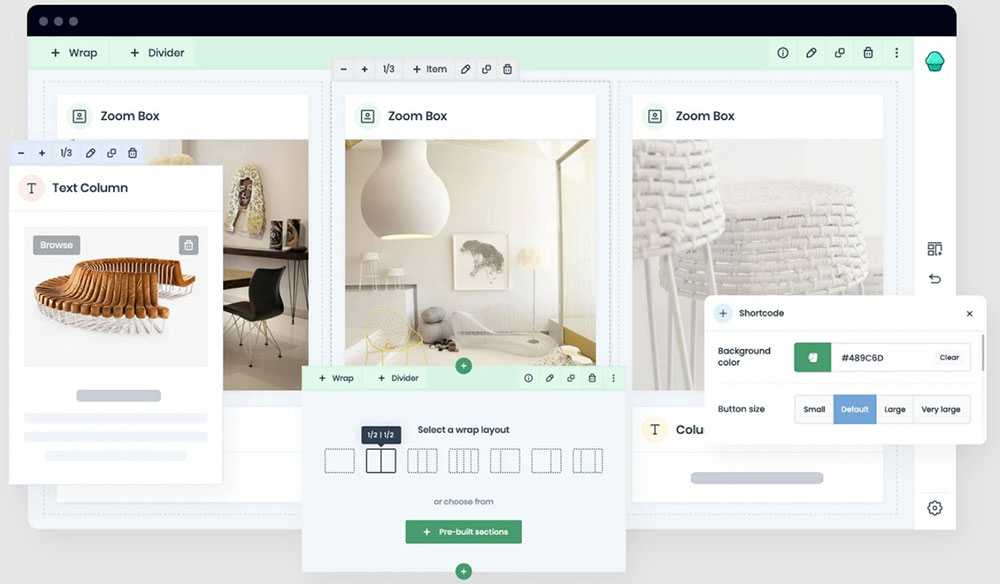
Muffin’s pre-built website sections include many awesome features and functionalities.
These address most of the content and design decisions you will likely face. They include:
- Home page and internal page layouts
- Basic website structure
- Text placement
- Images
With these features and functionalities, you can split the page you’re building into different work sections and then choose your:
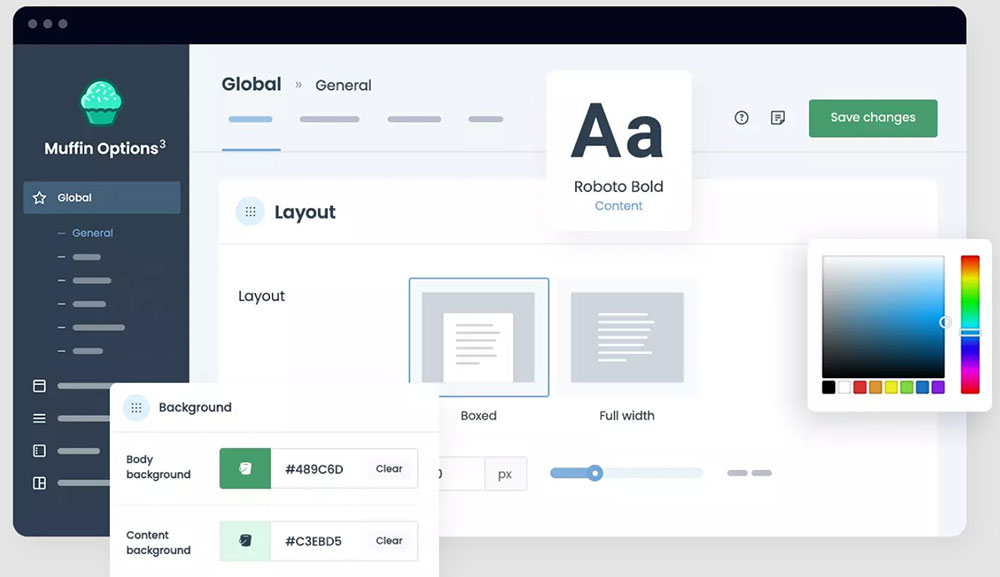
- Backgrounds
- Colors
- Sidebar
- Layouts
- Classes
The BeBuilder allows you to add the building blocks you desire within each section. It also lets you clone sections or items, resulting in faster website building.
BeBuilder vs. Elementor vs. Beaver Builder: Templates
These WordPress page builders empower you to build custom pages from scratch. But using templates results in a much faster design process.
Elementor Page Templates
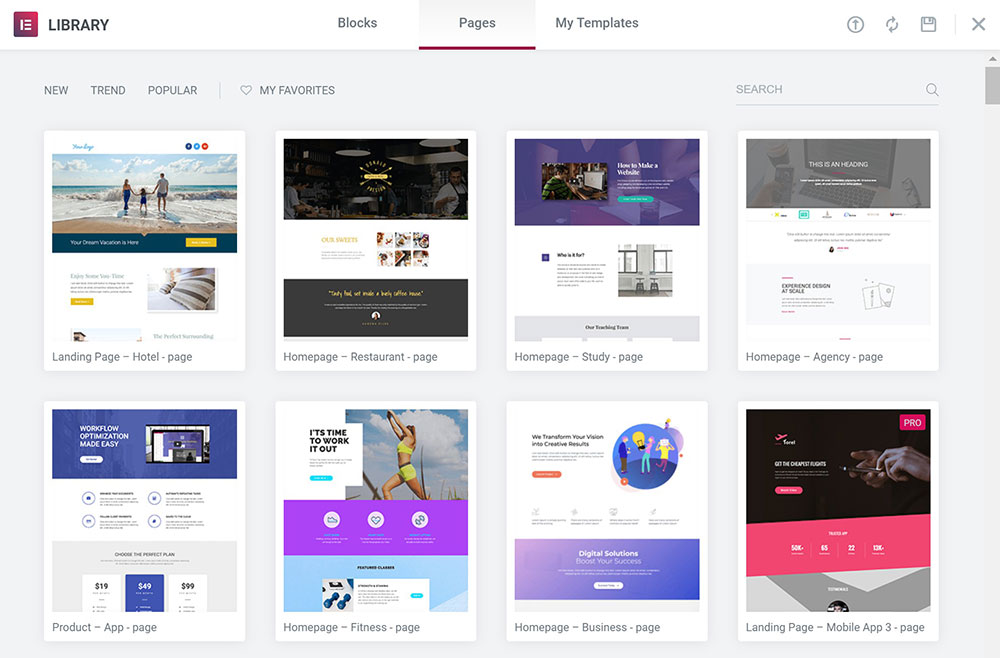
There are two main types of Elementor templates—block and page templates. Page templates are full pages that you can edit, while block templates are individual sections that you can assemble like Legos.
You can also save your personalized designs as templates for future use. For instance, you can create a custom block and save it as a template.
When needed, you can access your saved template from the left menu in Elementor on any page. You can also use third-party templates like widgets.
Elementor Pro offers over 300 blocks and templates covering a wide range of scenarios, including:
- Online shops
- Online portfolios
- Creative agency websites
- Business sites and more
Beaver Builder Templates
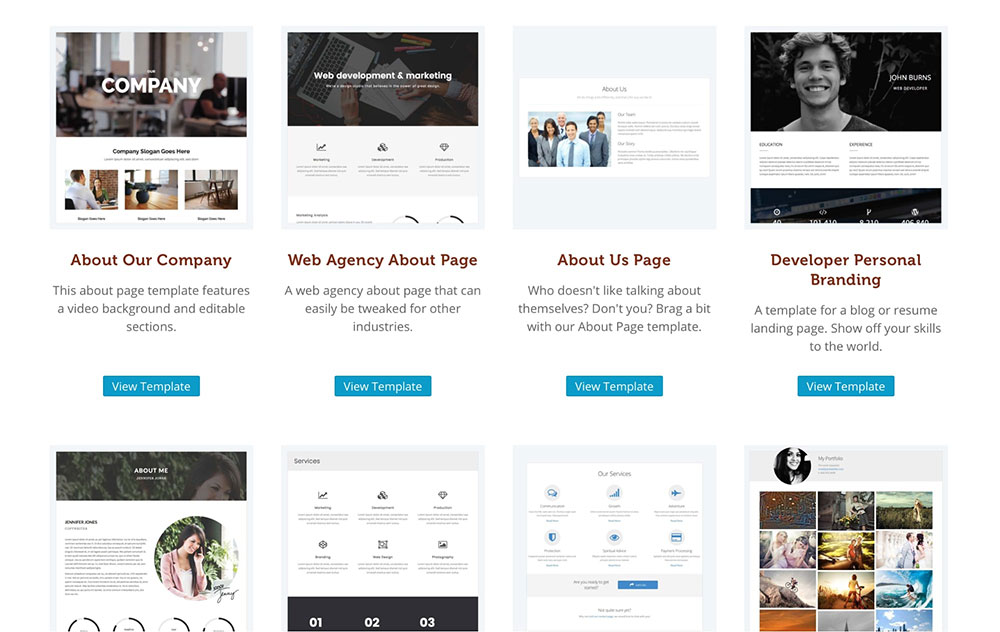
Unlike Elementor, Beaver Builder doesn’t come with block-level templates. But, you can use plugins for the same functionality.
The Beaver Builder’s free version doesn’t feature templating options at all. So if you choose the free version, you’ll have to do everything from scratch.
Beaver Builder offers three types of templates: Content Pages, Landing Pages, and Saved Templates.
Landing Page templates are ideal for building elaborate landing pages. There are 30 different landing page templates you can choose from within Beaver Builder.
Saved templates are your previously saved custom templates. That means, just like Elementor, you can create and save a page as a template for future use.
BeBuilder Templates
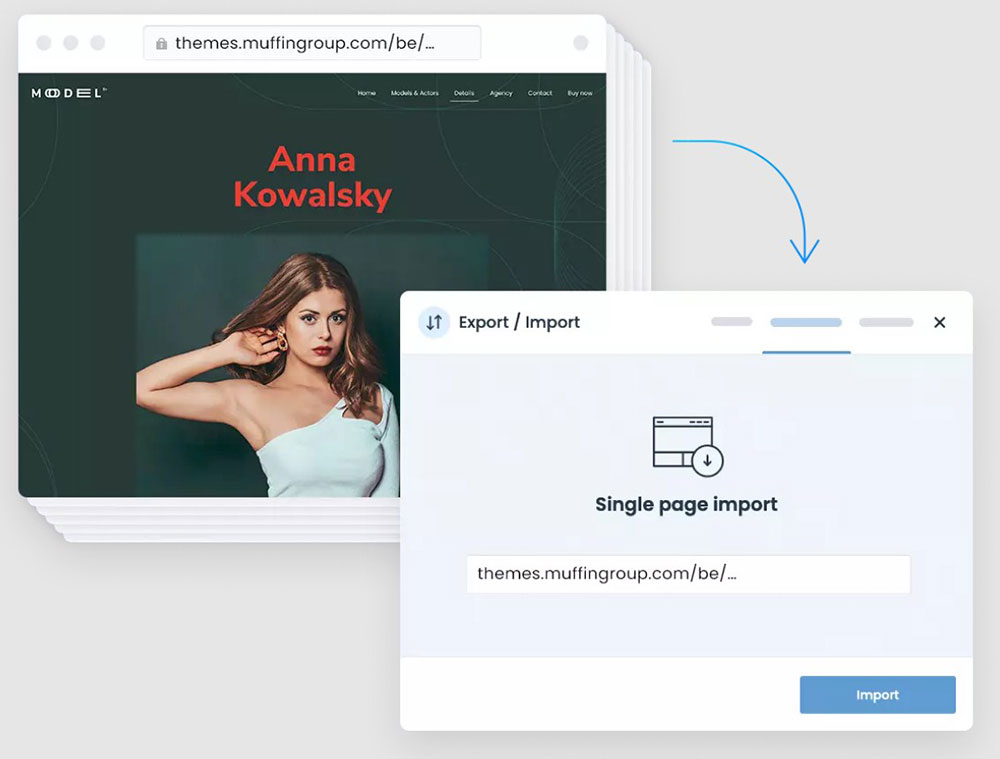
These custom post types with the Muffin Builder’s import and export functionality let you use your WordPress site content on other pages.
After creating your template, you can import it to any page you choose. Simply edit a post, page, or portfolio, scroll down below the Muffin Builder, and click the Templates button. Select the created template and import it. You may import it before or after the content or replace it altogether.
Elementor vs. Beaver Builder vs. BeBuilder: Customization
Elementor’s Customization Options
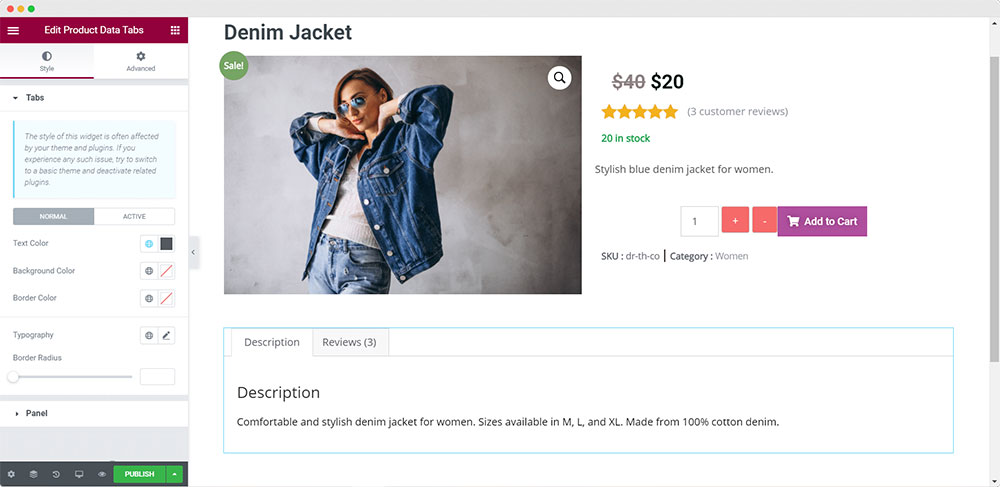
Unlike other page builders, Elementor grants full customization options without limiting your control. All of its widgets are customizable and have many options for things like:
- Borders
- Animations
- Fonts
- Margins
- Colors
- Background
- Padding
Elementor’s drag-and-drop page builder lets you see every change you make to your page in real-time. You can customize virtually everything, great or small.
You can customize larger elements like background images and minute details like button colors. You also can customize sections, like setting widths, gutters, and more.
Beaver Builder’s Customization Capabilities
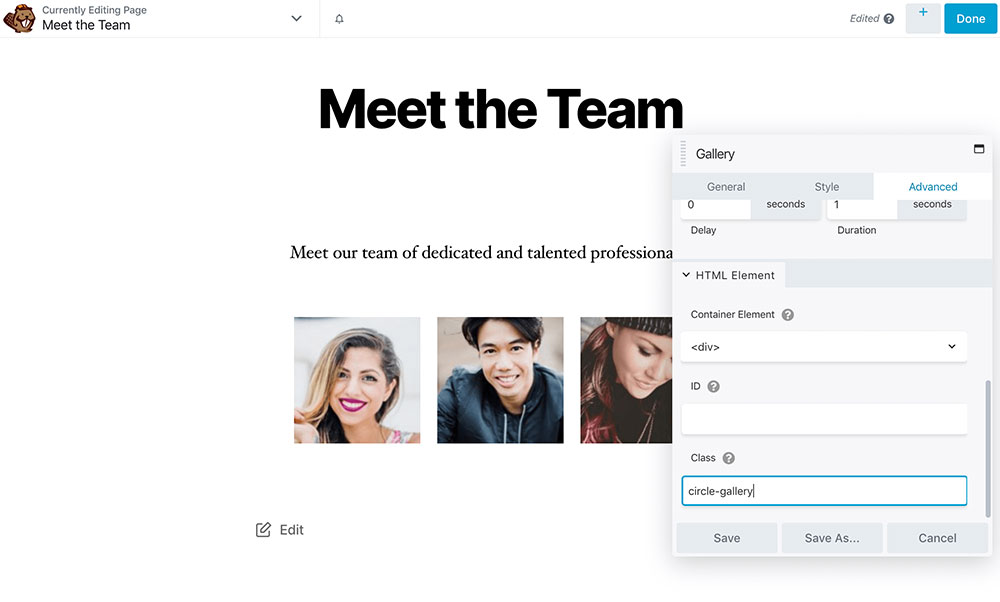
Beaver Builder is an excellent visual design tool for your WordPress website. Its drag-and-drop interface enables customization without interrupting normal WordPress development services.
Beaver Builder is a complete framework, and it comes with a unique and easy-to-customize child theme.
Simply install Beaver Builder and the BB theme. Then activate both, add your content, and hit publish. Besides basic Beaver Builder modules, you can also create and install custom modules.
BeBuilder’s Customization Options
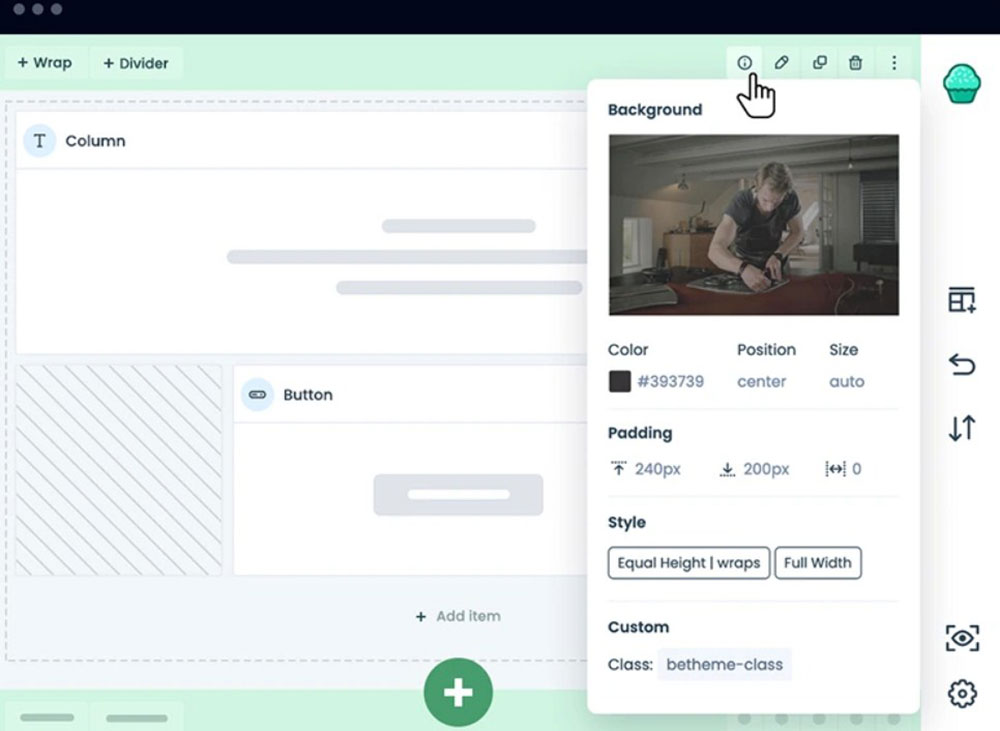
Going back and forth between the backend and frontend editor is time-consuming.
When making edits in this page builder, you can see how your changes will look to your visitors in real-time without switching tabs.
You can switch between mobile, desktop, and tablet views and make necessary changes with no fuss.
Elementor vs. Beaver Builder vs. BeBuilder: Modules & Widgets
Widgets, modules, sections, and rows are your design’s building blocks. Elementor calls them widgets while Beaver Builder calls them modules. However, these elements are the same thing.
Elementor WordPress Widgets
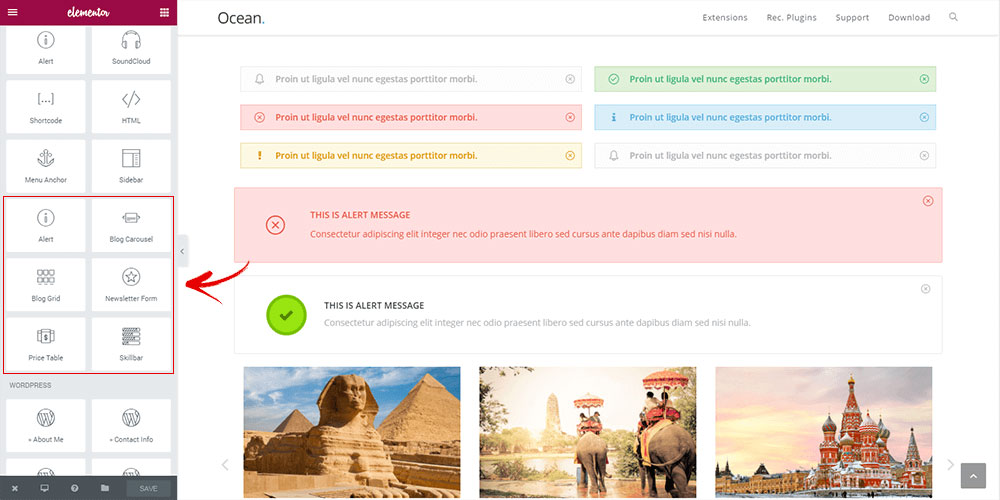
The three basic types of Elementor elements are columns, sections, and widgets.
Sections rank highest in the hierarchy, and each section contains widgets and columns.
Columns place second in the hierarchy where you find all the widgets. That means that widgets rank at the bottom. Sections and columns create various layouts, while widgets provide images, buttons, and text.
Elementor’s free version comes with 40+ widgets, while the premium version offers 50+ widgets. As new editions are released, the number of widgets available in both versions of Elementor increase.
Add as many widgets as you desire to each column. Style changes made to a section and columns will affect all content within that section.
Beaver Builder Modules
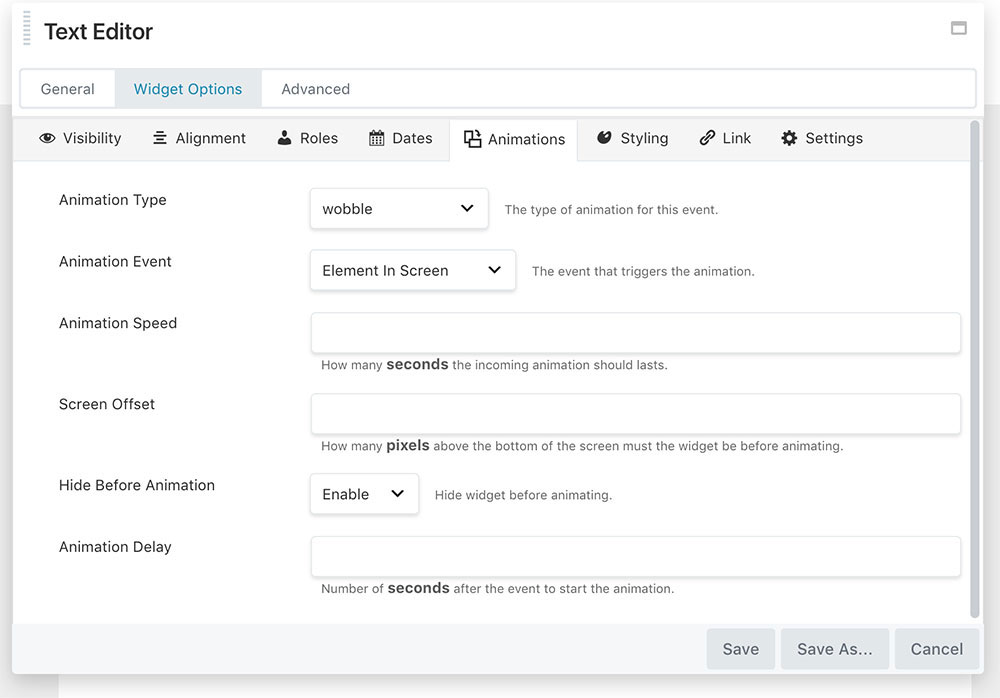
The Beaver Builder structure is similar to Elementor but with different terminology.
Rows
Similar to sections in Elementor, rows rank highest, and they apply cohesive spacing and backgrounds to the content.
Columns
Columns are in the middle of the hierarchy, and they fit inside rows and divide your page vertically.
Modules
Modules are the equivalent of Elementor’s widgets. They are your site content and provide buttons, images, text, and anything else you add.
Beaver Builder’s free version offers six modules, while the Beaver Builder pro version gives you 50 modules.
Like Elementor, you can extend your modules with third-party plugins. For instance, the Beaver Builder’s Ultimate Addons plugin gives you more than 60 new modules.
BeBuilder
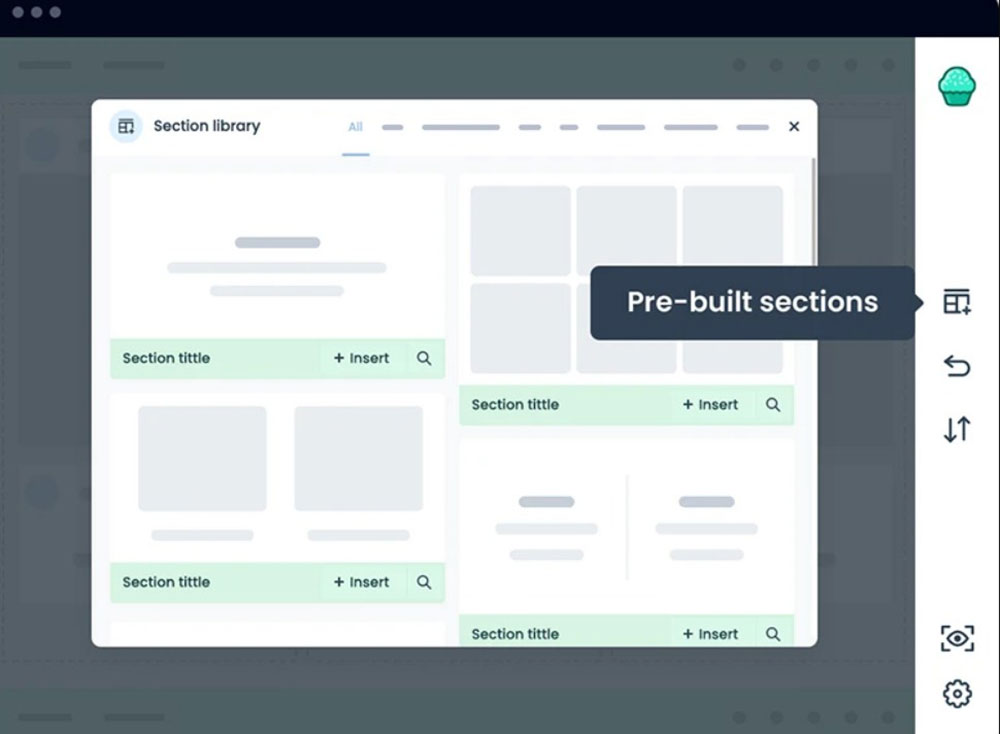
BeBuilder features pre-built sections to build any website for any purpose. This live builder lets you add a new section (in this case, the carousel section) via an existing pre-made or customized section.
Fortunately, pre-made sections aren’t new to page builders. And when you use them, you won’t need to search for a section matching your site or strip out existing content to make things fit.
The BeBuilder features more than 100 such pre-built sections. They are organized into Contact, Call to Action, and other practical categories for you to choose from.
These pre-built section templates more closely resemble wireframes than fully designed sections, meaning they can be repurposed to fit any website you’re working on.
Elementor vs. Beaver Builder vs. BeBuilder: Pricing
BeBuilder’s User Fee
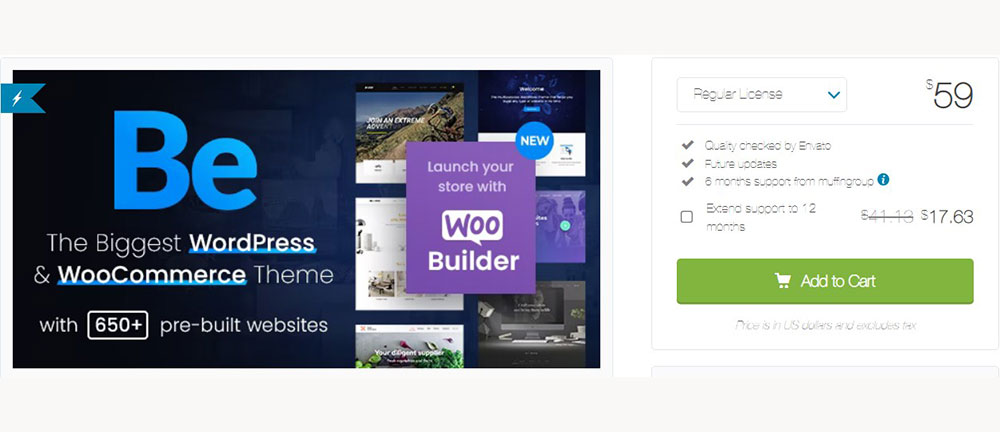
BeBuilder does not have gated pre-built sections or templates. So they only charge a $59 one-time fee.
BeBuilder comes in a larger WordPress package that includes Muffin Builder 3 (the backend builder), Muffin Woo Builder, and 600+ pre-built websites. That makes the one-time $59 fee a sweet deal!
Beaver Builder: Pricing
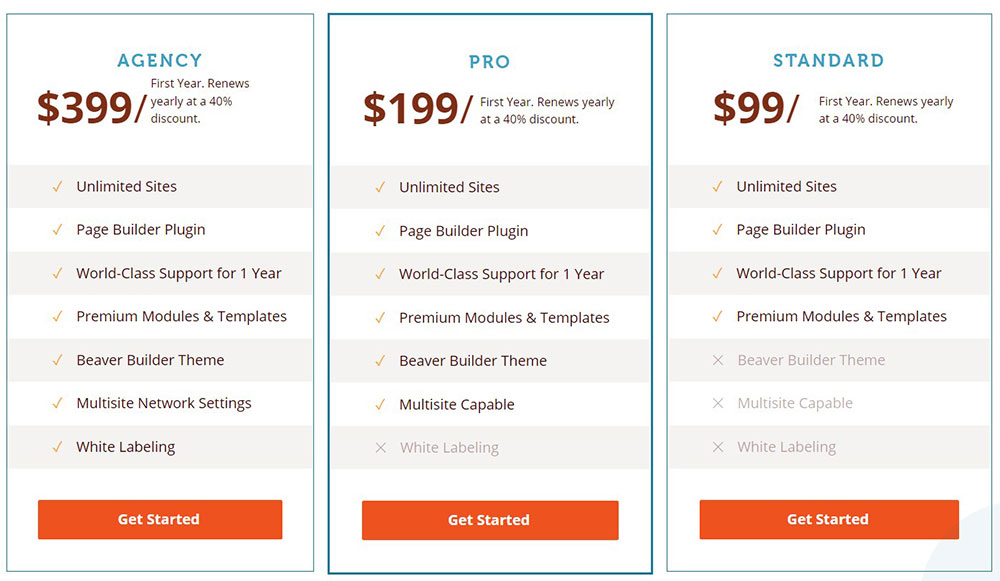
Beaver Builder features three premium plans:
- Standard
- Pro
- Agency
The Standard plan is $99, the Pro plan costs $199, and the Agency plan is $399. All plans are billed annually with no lifetime plan option. Beaver Builder offers a refund during the first 30 days if you’re not satisfied.
While you can use the Standard plan on all your sites, it doesn’t offer multisite support, Beaver Builder theme, or white labeling.
Costs Associated With Elementor
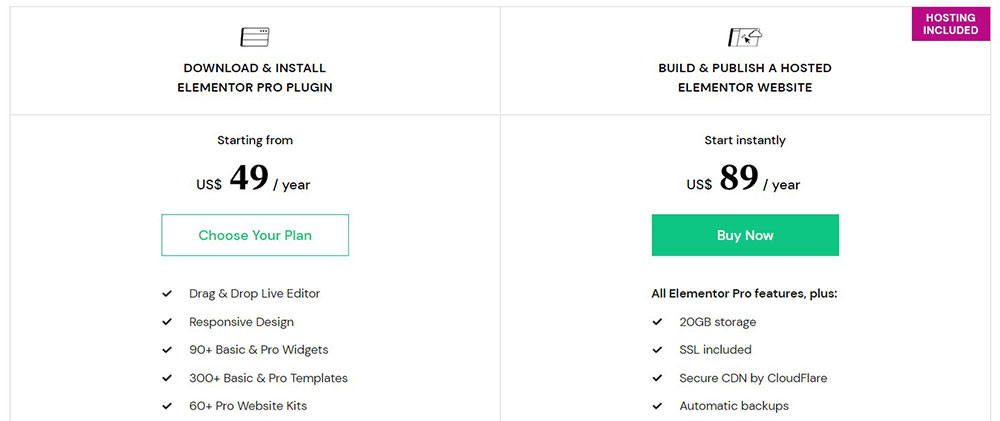
Elementor Pro features four plans. Each plan’s price is according to the number of sites it supports:
- $49 annually for one site
- $199 annually for 25 sites
- $499 annually for 100 sites
- $999 annually for 1,000 sites (The unlimited plan caps users to avoid abuse)
The one-year license needs to be renewed each year to continue receiving support and updates.
If you decide not to renew your license after the first year, all of your existing designs will still work. However, Elementor will lock the Pro widgets and the ability to add more Pro widgets to your designs.
FAQ about the Elementor vs Beaver Builder
What are the core features of Elementor, Beaver Builder, and BeBuilder?
Elementor shines with drag-and-drop editing, a vast library of templates, and Elementor widgets. Beaver Builder offers a straightforward front-end editor and robust content modules. BeBuilder focuses on a visual approach, providing extensive customization options.
Are these page builders beginner-friendly?
Absolutely. Elementor is intuitive, Beaver Builder is known for its user-friendly interface, and BeBuilder is designed for ease of use. Each has tutorials and support to help you get started without a steep learning curve.
How do these builders handle responsive design?
They excel in responsive design. With all three, you can tweak layouts to look great on any device. They offer tools and previews to ensure your site is mobile-friendly, an essential aspect for modern web design.
What kind of templates and pre-built layouts do they offer?
Elementor boasts a diverse template library. Beaver Builder includes pre-built templates, while BeBuilder offers unique layout designs. These features allow you to save time and achieve professional looks effortlessly.
Do they offer free versions or trial periods?
Yes. Elementor and Beaver Builder provide free versions with essential features. BeBuilder also offers a trial. These options let you test their core functionalities before committing to any premium plans.
How do they impact website performance and speed?
When optimized correctly, each page builder plugin performs well. SiteSpeed and plugin performance depend on various factors like image optimization and hosting quality. It's crucial to follow best practices to maintain fast loading times.
What kind of customer support do they provide?
Customer support varies but is robust across the board. Elementor offers extensive documentation and forums, Beaver Builder provides direct support through tickets, and BeBuilder has live chat. Quality support can significantly impact your experience.
Are these plugins compatible with most WordPress themes and plugins?
Yes, they are compatible with many WordPress themes and plugins. Elementor and Beaver Builder are particularly known for their wide compatibility, ensuring you can integrate them seamlessly into your existing site setup.
Can I integrate third-party services with these builders?
Third-party plugin integration is excellent with all three. They support a range of services from email marketing tools to advanced custom fields. These integrations empower you to extend your site’s functionality conveniently.
What sets each page builder apart in terms of unique features?
Elementor stands out with its Elementor Pro widgets and templates. Beaver Builder offers a simpler yet powerful interface. BeBuilder brings a fresh approach with intuitive layouts and customization, making it a solid choice for new users.
Conclusion
In exploring Elementor vs Beaver Builder vs BeBuilder, we’ve delved deep into the functionalities and unique offerings of these powerful WordPress page builders. Understanding the core features and nuances of each can significantly impact your website's performance, user experience, and design flexibility.
Elementor empowers you with an extensive library of drag-and-drop elements and responsive templates, perfect for creating visually stunning, SEO-friendly websites. Beaver Builder offers a robust, user-friendly interface, ideal for building streamlined sites efficiently. BeBuilder, with its intuitive customization options, caters well to both beginners and advanced users seeking control over their site’s aesthetics.
Choosing the right page builder plugin is pivotal. It can transform a standard WordPress site into an engaging, professional digital presence, enhancing your online footprint.
To conclude, consider your unique needs—responsive design, plugin integration, user interface, and customer support—to select the right tool for your website journey. Making an informed choice today will set the foundation for future online success. Choose wisely, and elevate your web design game to new heights.
If you enjoyed reading this article on Elementor vs Beaver Builder, you should check out this one about
using a WooCommerce page builder or this one with Elementor alternatives.
We also wrote about a few product comparisons like Elementor vs Divi, Elementor vs WPBakery, Elementor vs Wix, Elementor vs Oxygen, or Elementor vs Gutenberg.

